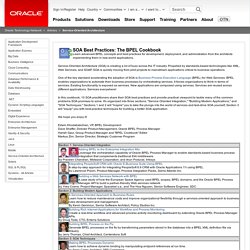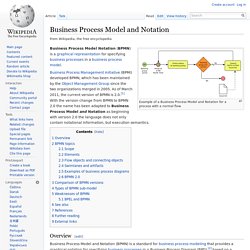

SOA Best Practices: The BPEL Cookbook. Learn advanced BPEL concepts and best practices for development, deployment, and administration from the architects implementing them in real-world applications.

Service-Oriented Architecture (SOA) is creating a lot of buzz across the IT industry. Propelled by standards-based technologies like XML, Web Services, and SOAP, SOA is quickly moving from pilot projects to mainstream applications critical to business operations. One of the key standard accelerating the adoption of SOA is Business Process Execution Language (BPEL) for Web Services.
Business Process Execution Language. Overview[edit] One can describe Web-service interactions in two ways: as executable business processes and as abstract business processes.

WS-BPEL aims to model the behavior of processes,[2] via a language for the specification of both Executable and Abstract Business Processes. By doing so, it extends the Web Services interaction model and enables it to support business transactions. Business Process Modeling Notation. Example of a Business Process Model and Notation for a process with a normal flow.

Business Process Model Notation (BPMN) is a graphical representation for specifying business processes in a business process model. Business Process Management Initiative (BPMI) developed BPMN, which has been maintained by the Object Management Group since the two organizations merged in 2005. As of March 2011, the current version of BPMN is 2.0.[1] With the version change from BPMN to BPMN 2.0 the name has been adapted to Business Process Model and Notation as beginning with version 2.0 the language does not only contain notational information, but execution semantics.
Overview[edit] The primary goal of BPMN is to provide a standard notation readily understandable by all business stakeholders.